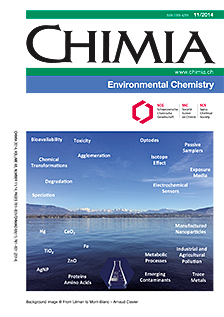Exploring the Behaviour of Emerging Contaminants in the Water Cycle using the Capabilities of High Resolution Mass Spectrometry
DOI:
https://doi.org/10.2533/chimia.2014.793Keywords:
Emerging contaminants, High-resolution mass spectrometry, Non-target screening, Transformation products, Water cycleAbstract
To characterize a broad range of organic contaminants and their transformation products (TPs) as well as their loads, input pathways and fate in the water cycle, the Department of Environmental Chemistry (Uchem) at Eawag applies and develops high-performance liquid chromatography (LC) methods combined with high-resolution tandem mass spectrometry (HRMS/MS). In this article, the background and state-of-the-art of LC-HRMS/MS for detection of i) known targets, ii) suspected compounds like TPs, and iii) unknown emerging compounds are introduced briefly. Examples for each approach are taken from recent research projects conducted within the department. These include the detection of trace organic contaminants and their TPs in wastewater, pesticides and their TPs in surface water, identification of new TPs in laboratory degradation studies and ozonation experiments and finally the screening for unknown compounds in the catchment of the river Rhine.Downloads
Published
2014-11-26
Issue
Section
Scientific Articles
License
Copyright (c) 2014 Swiss Chemical Society

This work is licensed under a Creative Commons Attribution-NonCommercial 4.0 International License.
How to Cite
[1]
J. Hollender, M. Bourgin, K. B. Fenner, P. Longrée, C. S. Mcardell, C. Moschet, M. Ruff, E. L. Schymanski, H. P. Singer, Chimia 2014, 68, 793, DOI: 10.2533/chimia.2014.793.







